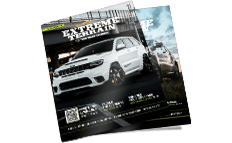Aftermarket Parts for the 2023 Toyota Tacoma Aftermarket parts are a crucial element that caters to the unique needs of car enthusiasts, auto professionals and mechanics. For those interested in the 2023 Toyota Tacoma, understanding the different categories of automotive parts, along with their varying functions, materials, manufacturing procedures and quality standards, will assist in making informed decisions regarding part installation and maintenance for optimal vehicle performance.
Key Categories of Automotive Parts
Two primary categories of automotive parts are often of chief interest: mechanical and electronic parts. Mechanical parts include crucial components such as the engine, transmission, suspension, exhaust, and brakes — all integral elements designed to ensure optimal vehicle operation. On the other hand, electronic parts, such as sensors, control units, and onboard computers, work in harmony with the mechanical parts to ensure a balanced, secure, efficient performance.
Materials and Manufacturing
The materials used in the manufacturing of these automotive parts can range from robust metals, like aluminum, steel, or cast iron, to advanced engineered plastics and ceramics. The specific material chosen significantly influences a part’s durability, weight, and resistance to wear and damage. Each automotive part, be it mechanical or electronic, must pass rigorous quality standards. In manufacturing these components, varied processes such as cold forging, casting, stamping, and injection molding are employed, ensuring the product's robustness, reliability, and longevity. Automobile manufacturers adhere to stringent international standards such as ISO/TS 16949 or specific durability testing protocols to ensure their parts meet the highest quality and safety benchmarks.
Compatibility and Longevity
When considering the suitability of an automotive part for the 2023 Toyota Tacoma, compatibility plays a key role. This often depends on the model year, the specific trim, and whether the car has been modified or not. Factors such as the vehicle’s age, mileage, operating conditions, and maintenance history strongly influence part selection and longevity. For instance, a Toyota Tacoma that has seen heavy off-road use may require more frequent suspension component replacements compared to a similar model used only on paved roads.
Performance Characteristics
Performance characteristics of aftermarket parts range from improved power and torque, increased fuel efficiency, enhanced comfort, and improved safety features. For example, high-performance brake parts often use more advanced materials that provide increased stopping power, while custom exhaust systems can improve engine efficiency and output.

















